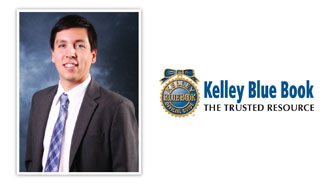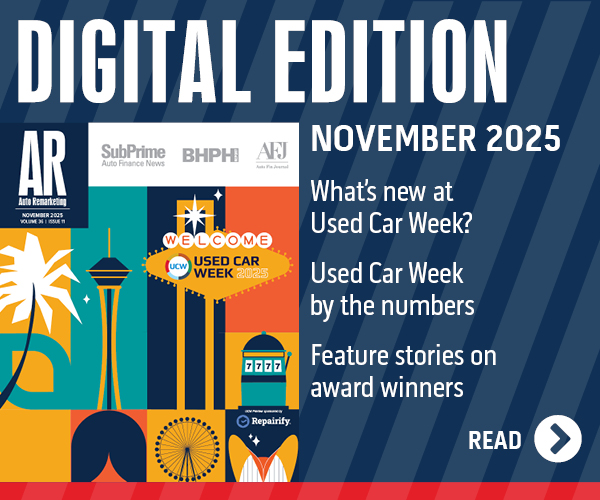KBB: Summer’s Used Price Decline May Approach 7 Percent

By subscribing, you agree to receive communications from Auto Remarketing and our partners in accordance with our Privacy Policy. We may share your information with select partners and sponsors who may contact you about their products and services. You may unsubscribe at any time.
IRVINE, Calif. –
Pushed by cheaper oil and consumer appetite for new vehicles, last month showed a 3-percent dip in used-vehicle values, according to Kelley Blue Book.
And this decline isn’t over.
The firm is projecting used values to remain on the downturn over the next three months, possibly falling 6 percent to 7 percent amid slowing demand and recouping used supply.
“The market has finally reached a point where we are seeing the first year-over-year declines since 2009,” explained Alec Gutierrez, senior market analyst of automotive insights at KBB.
“Although values remain more than 20 percent higher than they were in 2009, values are 3.7 percent lower than this time last year,” he continued. “As new-vehicle sales have increased, demand for used cars has dropped off. A used car has been traditionally viewed as a substitute good, appealing to those who don’t have the means or desire to pay a premium to own a new car.”
One factor that has played a particularly strong role in the year-over-year drop-off, Gutierrez says, is the inventory situation. A year ago, of course, there was an inventory shortage because of the Japanese disasters, and this pushed values up.
Subscribe to Auto Remarketing to stay informed and stay ahead.
By subscribing, you agree to receive communications from Auto Remarketing and our partners in accordance with our Privacy Policy. We may share your information with select partners and sponsors who may contact you about their products and services. You may unsubscribe at any time.
“With inventory no longer a major hurdle, Kelley Blue Book is seeing a reversal of this trend,” he explained.
On the used-vehicle sales front, KBB also spotted a big downturn in a recent month. More specifically, touting the most recent Polk vehicle registration data, Gutierrez said March showed a 10-percent year-over-year decline in used registrations.
At the same time, there have been continued gains in new-vehicle sales.
In fact, retail new-vehicle sales in May soared 18.5 percent year-over-year to 1.07 million units, according to J.D. Power and Associates, which put total new-vehicle sales (including fleet) at 1.33 million units for a 16.1-percent gain. J.D. Power also pointed out that the used-to-new ratio fell 12.8 percent on a year-over-basis in May, coming in 76 percent.
Commenting further on the March used registration decline shown by Polk, Gutierrez said: “This may turn out to be a one-month anomaly, but it also could signal the start of a growing trend. New cars have become more affordable after accounting for incentives, low finance rates and improved credit availability, and this likely will continue to suppress used-car values.”
Based on this new-car affordability, Gutierrez said a used sales decline doesn’t surprise him.
“Consumers have realized a new car is only slightly more expensive than buying a one- or two-year-old used car, and this has helped to not only bolster new-car sales, but lessen demand at auction and drive down used-car values,” he shared.
The segments at the forefront of the value drop-offs in May were the fuel-friendly ones. As gas prices have cooled, so has used-vehicle demand for these segments, Gutierrez explained.
“Kelley Blue Book Market Intelligence data has shown for years that as pump prices rise, consumer demand and sales of fuel-efficient vehicles increase. However, as soon as gas prices start falling 20 cents per gallon or more, car buyers flock back to SUVs and trucks in droves,” he noted.
As such, May showed 2- to 3-percent declines for fuel-friendly car segments, Gutierrez added, noting that the heftiest of these drops was among hybrid cars, which had been “hot,” but fell 4 percent last month.
Taking one of the harder price hits was the 2010 Toyota Prius, whose price dropped more than $1,200 during the month, he shared.
“Even after this decline, the Prius still remains up $2,000 since the start of the year, and likely faces further depreciation in the months ahead,” Gutierrez emphasized. “Although values of fuel-sipping vehicles have dropped in recent weeks, Kelley Blue Book does not expect as significant of a correction for those vehicles as with the Prius.”
More specifically, KBB is expecting a modest summer slowdown for compacts and subcompact — at most, dropping 2 percent to 3 percent per each month — followed by these segments “leveling off” come autumn, says Gutierrez.
The compact car segment climbed 1.3 percent from January to June 1, and subcompacts jumped 4.4 percent during this time frame.
“Although earlier in the year Kelley Blue Book anticipated more pronounced gains in response to rapidly rising fuel prices, the early peak in April quickly altered the company’s initial forecast,” he illustrated.
“Hybrid cars such as the Toyota Prius are still due for a correction since they remain up 15.9 percent since the start of the year, so expect more significant declines for hybrids,” Gutierrez concluded.
Editor’s Note: Auto Remarketing and sister publication SubPrime Auto Finance News will continue to have analysis from KBB and J.D. Power on sales and pricing trends. Stay tuned to Wednesday’s SubPrime News Update, which will include J.D. Power’s look at the industry’s leasing and financing trends.


